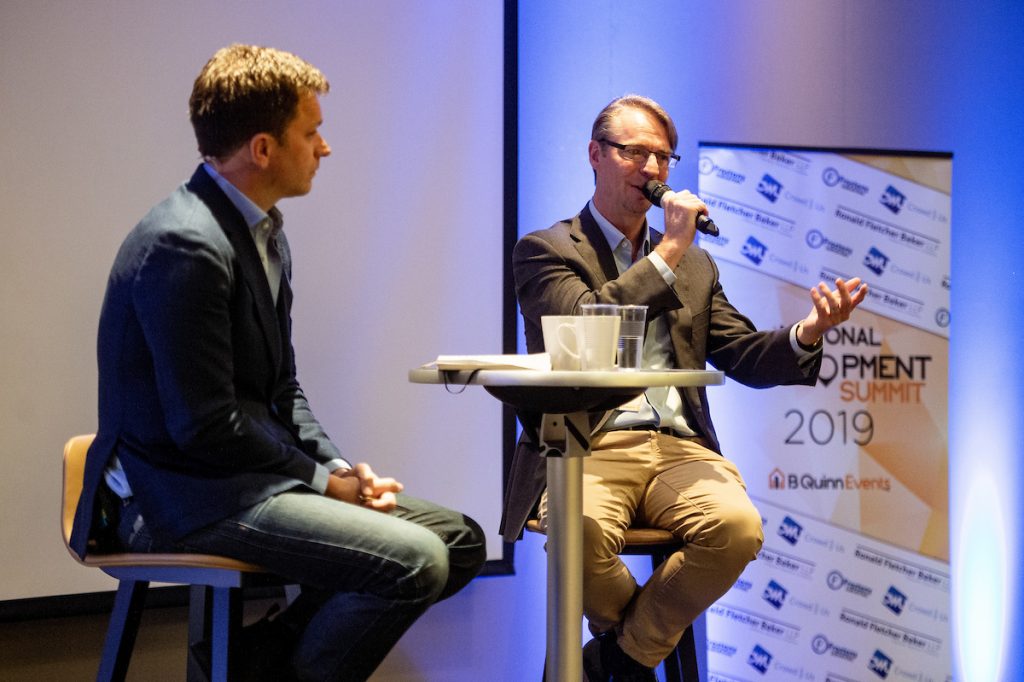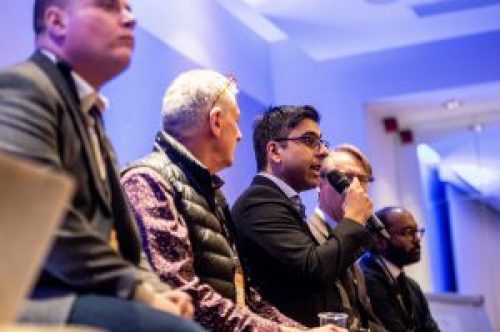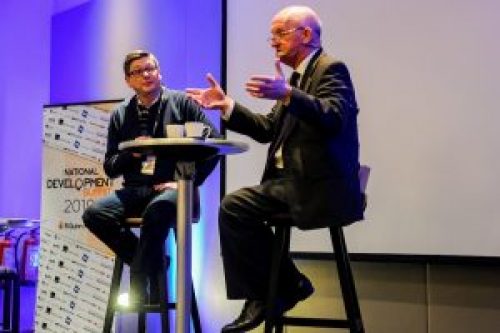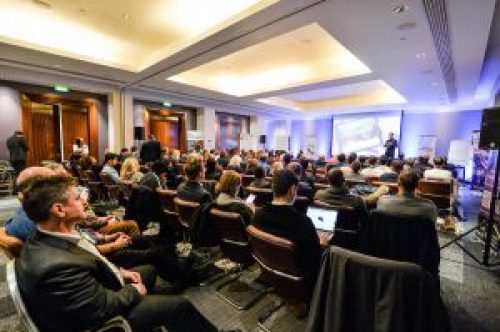So Long National Development Summit (& Thanks For All The Fish)
I was delighted to attend this year’s National Development Summit. If you were lucky enough to be there too, you would know it was an excellent and thought-provoking day. If you didn’t make it don’t worry, here are my key takeaways to help with your property development business in 2019. To make sure you don’t miss out on next year’s Summit, mark the 18th January 2020 in your diary now.
7 Key Takeaways from the 2019 National Development Summit:
1. The Market is Changing: Align your Strategy Carefully
The day kicked-off with Richard Bowser, the Editor of Property Investor News, giving an excellent overview of the market.

It didn’t come as much of a surprise to hear the market is slower than it was 12 months ago. But, did you know the average time on site for a property in Edinburgh – one of the UK’s best-performing markets – has slipped from 50 days to 111 days? Or the average time on market for a property in Mayfair, Knightsbridge or Marylebone is 338 days?
No doubt this is related to Brexit and the recent changes to taxation, but what does it mean for your development programme? Can your margin accommodate the cost of financing a site that you retain for 338 days on the market? Better make sure you plan accordingly.
Richard also addressed some of the critical drivers of housing demand. He highlighted the future for retirement living as an exciting market. Did you know that within the next decade there will be more than 4m over 65s in Great Britain? But the needs and wants for this demographic are changing. They’re living longer and differently to previous generations, which means there’s a massive gap in the provision of suitable housing. This change has to be a vast market to consider.
2. Development is a Risky Business: But You Can Be Successful
Rod Turner, Rudi Ramdarshan, Rob Wilkinson, Paul Higgs and Val Bagnall joined forces for a panel session on overcoming the challenges of development. The panel had some interesting views for newer developers based on the hard-won battle scars of experience.

There seemed to be universal agreement that you should start small – a sentiment echoed by Thomas Knust and Matt Siddell later in the day – get the right team in place and know your numbers. On this point, Paul Higgs was clear – “don’t f**k around with the figures to make your deal look good.” I’m sure we’ve all been there, stacking up a deal with a big dose of optimism. According to Val, we need to be honest with ourselves and “turn down the gas on our optimism.” Do your due diligence properly as Paul stressed “the market will no longer get you out of the shit”.
Overall the panel agreed you have to accept that development is risky. That’s why the rewards can be so high too. I enjoyed Ross Harpur’s take on risk management whereby he always pays the best money to get the best people on his projects. This focus on high quality trades and consultants means he never has to worry about work not being delivered or being delivered poorly.
One area for optimism is the likely change to planning rules allowing permitted development on retail to residential schemes. This change might be an excellent area to start exploring before the masses crowd in.
3. Working with Investors: It Comes down to Know, Like and Trust
After a sobering dash of reality on the challenges of development, it was great to hear from Evan Maindonald of MELT Homes. Evan’s team has been building a geographically diverse portfolio since he left the corporate world, with a focus on his core philosophies of rigorous risk management, value enhancement and design-led development. These philosophies have enabled MELT to deliver homes they are proud of that enhance peoples’ lives while generating a high rate of return.

It’s clear Evan pays attention to good design and this impacts his bottom line. A sentiment repeated throughout the day, notably by Co-Living’s Stuart Scott and Ross Harpur, the man behind the impressive and award-winning Belmont West church conversion in Glasgow.
Evan went on to expand on how to attract investors, referencing the oft-cited 7 points on connection to get people to ‘know, like and trust’ you. Gaining investment is often seen as a significant hurdle in development, but if you can clearly spell out the returns available, how long you need the funds for, what security you’re offering and also give investors enough confidence they’ll get their money back, you will have plenty of good conversations.
4. The Customer is Changing: Is Your Product Keeping Up?
Stuart Scott from Co-Living Space followed Evan in waxing lyrical about the need to deliver design led developments. Stuart expanded on this as how to meet the changing needs of his customers – Stuart develops HMOs and boutique hotels in Brighton.

It was clear from the photographs of his properties that Stuart cares greatly about delivering a customer experience and not just a room in a shared house. He has achieved this by focusing on the changing demands of his target customers, which, unsurprisingly has led him to a premium design and premium priced product.
5. Don’t Forget Marketing: It’s More Than a Logo
Stuart’s other core message was around marketing, not just to attract tenants – or guests for his hotel – but in communicating with investors and other stakeholders too. You’d expect this from a former marketing agency owner, but there were some core lessons to learn about the importance of the brand experience beyond just a logo and colour palette.
Ross Harpur expanded on this with an example of how he recently sold an apartment in Belmont West off plan through a LinkedIn post. “Lots of the value and the increase in GDV has been driven on social media.”

Social media was a key point in Stuart’s presentation too – as he extolled the virtues of consistently telling your brand story to engage all of your target audiences. You don’t have to spend a fortune on marketing and communications, but you do need to be active and visible.
6. Due Diligence: Does Your Deal Make Sense
As developers, two of the main challenges are finding sites that stack up and getting investors to fund the project. Brian Levin from Crowd With Us gave an excellent and concise talk on how lenders do their due diligence on projects. He summed it up as simply, “does your development make sense?”

You need to explain your deal in the best possible light if you want to attract investment and of course, get the detail right. Brian has been amazed at how many ‘ opportunities’ he’s presented with where simple things are wrong, like the numbers not adding up. It seems incredible but unsurprising that sometimes the numbers don’t stack, or there aren’t clear enough exit routes should plan A not go to, well, plan.
Brian expanded on the use or Personal Guarantees (PGs) too, explaining that often PGs are used for lower cost schemes as they provide a suitable means for a lender to get their money back. On larger projects, the security is all about the property asset.
7. Build to Rent: Is it Just for Big Pension Funds?
It seems ‘Generation Rent’ is here to stay, with significant pension funds investing in PRS schemes for the long term. This presents a good opportunity for developers to consider for exit, rather than selling units individually. Either that or consider refinancing a project to deliver “housing as a service” but be aware the model is fundamentally different to build to sell.
Thomas Knust from Horstix – a PRS developer – stressed the importance of managing cash flow and keeping your operating costs as low as possible. He cited critical skills in property development of understanding finance, being able to source good opportunities and being clear in project management. In Thomas’ opinion there are significant challenges ahead for PRS schemes – particularly for smaller developers – as margins are being squeezed by market pressures, the falling value of the pound and ever-increasing build costs.

Richard Bowser and Justin Carr from the GLA raised the opportunities available for small sites. Although in reality, with sites starting at 0.25 hectares, they’re perhaps not small enough for many developers – particularly those starting their development careers.

If you’re operating at the social housing end of the spectrum, make sure you look for opportunities to tap into the GLAs £5bn funding pot. Also, if you’re considering offsite construction, take a look at the innovation fund too.
So, there you have it, seven highlights from this year’s National Development Summit. There were many more, such as the presentation from Ronald Fletcher Baker on being creative with contracts, or indeed my talk on profiting from short term lets. You can find out more at our respective websites. Take a look at a gallery of photos taken at the Summit below and you’ll get a sense of how busy the event was.
I encourage you to plan ahead and book up next year’s Summit if you are at all interested in property development. It’s useful to read the highlights, but it’s far better to learn them in person and to build your network at the same time.
To find out more visit: http://bquinnevents.com/nds
Andy Bargery
Marketing Director

















































